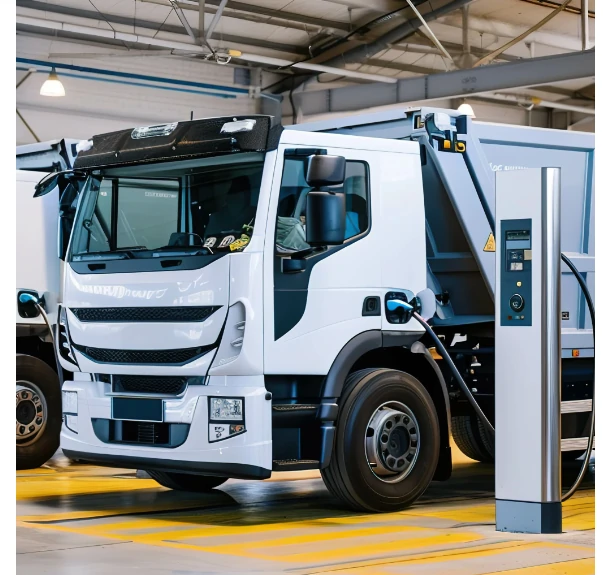What is Medical Waste?
Medical waste refers to hazardous waste produced by healthcare facilities through their interaction with patients. It includes used cotton balls, gauze, bandages, disposable medical instruments, expired medicines, post-surgical discards, and more. Medical waste is unique due to its high levels of infectious microorganisms, viruses, and chemicals, making it highly infectious, biotoxic et corrosive.
Medical waste is classified into five categories:
- Infectious Waste
- Pathological Waste
- Injurious Waste
- Pharmaceutical Waste
- Chemical Waste
It has serious environmental impacts, including contamination of the atmosphere, groundwater, surface water, and soil. Improper handling can release harmful gases like ammoniaet sulfides, and dangerous compounds such as PCBs et dioxins. These compounds are carcinogenic and can cause long-term environmental damage.

Dangers of Improper Medical Waste Management
Vertical Containers
Some improperly managed medical waste is repurposed for illegal activities, such as reprocessing used medical equipment for resale or reusing expired drugs, which can result in health risks and the spread of diseases like AIDS</strong.
Chemical and Radioactive Hazards
Medical waste can contain harmful chemical pollutants and radioactivity, posing significant health risks to both handlers and the public.
Pathogens
Medical waste often harbors disease-causing microorganisms, making it a breeding ground for pests like mosquitoes, flies, and rats, which can spread diseases to humans.

Importance of Medical Waste Management
Given its potential harm to the environment and public health, effective management and harmless treatment of medical waste is critical. Proper waste handling prevents contamination, reduces health risks, and ensures a safer environment for both workers and the public.
Technologies for Medical Waste Treatment
There are several technologies available for treating medical waste, each with its own advantages depending on the type of waste and treatment objectives
- High-Temperature Steam: Uses high pressure and temperature to sterilize waste, killing microorganisms and viruses.
- Chemical Disinfection: Uses chemicals to disinfect waste.
- Microwave Disinfection: Uses microwaves to kill pathogens.
- Medical waste is incinerated at high temperatures in a deep oxidation process that reduces it to ash and gas. Incineration effectively destroys pathogens and harmful substances, reducing volume and weight.
- Applicable for all types of infectious waste**, incineration remains one of the most widely used methods for medical waste treatment.
Pyrolysis heats organic matter in medical waste at high temperatures in an oxygen-deficient environment, breaking chemical bonds and transforming large molecules into gases, liquids, and solid residue.
Compared to incineration, pyrolysis operates at lower temperatures, without open flames, reducing emissions of heavy metals.
- Plasma arc technology uses high-temperature plasma to break down microorganisms, destroy harmful drugs and chemicals, and melt metals and inorganic chemicals, rendering them harmless.

The Evolution of Medical Waste Management in China
China has evolved through several stages in managing medical waste:
Natural Management Phase
During this period, China primarily reused medical supplies due to material scarcity. Medical waste was minimal and often disposed of by burning in hospitals' incinerators. The introduction of single-use medical supplies in the late 1970s led to a significant increase in medical waste.
1949-1986
Stage of Sudden Increase in Medical Waste
The rapid adoption of disposable medical supplies led to a sharp rise in medical waste. The lack of appropriate technology for waste treatment resulted in pollution and health risks, particularly due to unregulated incineration practices.
1987-2002
Legalization Phase
In 2003, China introduced Règlement sur la gestion des déchets médicaux, marking the transition to a legalized approach for managing medical waste. During this phase, comprehensive policies and standards were established, and China signed the Stockholm Convention on Persistent Organic Pollutants (POPs), focusing on the reduction and environmentally sound management of medical waste. Between 2008 and 2017, China collaborated with international organizations to implement sustainable waste management practices.
2003-2019
Quadruple Management Phase
With the advancement of medical technology, China has focused on improving medical waste management through standardization, scientific methods, refinement, and information technology. Key challenges include managing the centralized disposal of waste, improving the classification and collection systems, and addressing interdepartmental supervision.
Post-2020
WHO Guidelines and the Blue Book
The WHO’s Blue Book on Safe Management of Healthcare Waste sets out guidelines for effective medical waste management: It emphasizes the need for a regulatory framework, clear operational roles, and responsibilities. Key objectives of a national medical waste management plan include:
- Legislative and regulatory framework establishment.
- Clarification of waste management operations in the healthcare sector.
- Capacity building and training for medical personnel.
- Development of monitoring and reporting systems.
- Pollution reduction through proper waste treatment.
Challenges in Medical Waste Management
Despite progress, challenges remain
Financial Constraints
Many hospitals still lack the resources to implement adequate waste management systems.
Lack of Awareness
Some hospitals do not prioritize waste classification, and many areas still have poorly implemented waste treatment procedures.
Mixing with Domestic Waste
Medical waste is often improperly mixed with household waste, which can cause contamination.
Prevention of Pollution
There have been reports of medical waste being recycled or sold for profit, including the reuse of infusion bottles, expired drugs, and plastic medical supplies.
Solutions to Improve Medical Waste Management
Medical waste containers must meet the following criteria to ensure their durability and safety

Stronger Regulations and Oversight
Increased penalties for non-compliance and better enforcement of medical waste management laws.

Standardized Collection and Treatment
Establishing clear protocols for medical waste classification, collection, and disposal, ensuring waste is handled safely from generation to final disposal.

Building Professional Treatment Facilities
Developing centralized and standardized medical waste treatment centers with modern technology to handle medical waste more efficiently.

Raising Safety Awareness
Increasing awareness among medical staff and the public about the importance of safe waste handling practices.

Load-bearing capacity
Using IT solutions to track and manage medical waste generation, transportation, and disposal to ensure transparency and regulatory compliance.
Conclusion
Proper management of medical waste is essential for protecting the environment and public health. While China has made significant strides in improving waste management, ongoing efforts are needed to address regulatory gaps, improve treatment facilities, and raise awareness. By strengthening regulations, standardizing procedures, and building capacity, China can move towards a more sustainable and safe medical waste management system.
FAQ
Biosafe offre une gamme complète de produits de haute qualité, soutenue par 16 ans d'expertise industrielle. Nous excellons dans la compréhension des réglementations mondiales, dans la fourniture de solutions sur mesure et dans la prestation d'un service après-vente fiable grâce à notre réseau d'ingénieurs locaux.
Tous nos produits sont soumis à des contrôles de qualité rigoureux et sont certifiés CE, ce qui garantit qu'ils respectent et dépassent les normes réglementaires mondiales. Notre connaissance approfondie des lois internationales nous permet de guider nos clients en matière de conformité, quel que soit l'endroit où ils opèrent.
Oui, Biosafe dispose d'un stock important et propose des livraisons rapides, y compris des services porte-à-porte. Nous comprenons l'urgence de la gestion des déchets médicaux et sommes équipés pour fournir une assistance rapide lorsque vous en avez le plus besoin.
Notre engagement à satisfaire nos clients ne s'arrête pas à la vente. Nous fournissons une assistance permanente par l'intermédiaire de nos ingénieurs locaux, afin de garantir la résolution rapide de tout problème. Nous offrons également des conseils pour aider nos clients à tirer le meilleur parti de nos produits et solutions.
Biosafe possède une vaste expérience dans l'assistance aux clients dans le cadre d'appels d'offres pour des produits médicaux. Nous fournissons des conseils d'experts sur la sélection des produits, la documentation de conformité et des solutions sur mesure pour répondre aux exigences spécifiques de chaque appel d'offres, aidant ainsi nos clients à réussir dans les processus d'appels d'offres concurrentiels.
Envoyer un message
Nous trouver
17th Floor, Caochangmen street, Nanjing City, Jiangsu Province, China
Courriel : [email protected]
Téléphone : +86 13276687134 Téléphone : +44 07516023572
